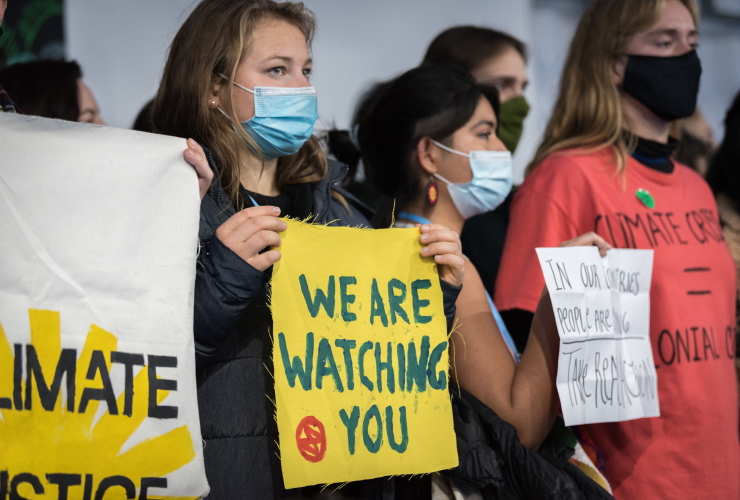Biodiversity has long been an overlooked factor in the ESG discussion. However, the UN Biodiversity Conference (COP15) in Montreal this December should be an indication there is a greater urgency than ever for investors to fully understand how we depend on and have an impact on biodiversity.
What do we mean by biodiversity? Essentially, it is the variety of all life on Earth or in a particular habitat. Nature is our greatest asset — we rely on complex ecosystems to ensure we have access to food, water and shelter, and to regulate climate and even oxygen production. Ecosystems are the basis on which our society survives and should be an important consideration when making economic and financial decisions.
This is particularly vital since the World Economic Forum’s Global Risks Report 2022 warns that biodiversity loss is one of the top three threats facing humanity in the next 10 years.
Companies should be aware that biodiversity loss can affect not only their ability to operate but also the economy as a whole. More than 50 per cent of the world’s GDP is influenced by or depends on biodiversity, and companies across different sectors rely on all aspects of nature to produce goods and services and prosper.
Changing the existing practices of big corporations is one of the most important things we can do to prevent further biodiversity degradation. Moody’s has found that nearly 40 per cent of large publicly traded companies are directly responsible for habitat loss. This number increases when you look at indirect contributions through supply chains.
Financial institutions and investors have a crucial role to play in ensuring that corporations are considering biodiversity and adopting best practices to protect the natural systems we rely on. Shareholders have the power to compel these changes by engaging directly with the companies they invest in.
For example, conversations on supply chain management have compelled companies like Unilever to commit to a deforestation-free supply chain by 2023 for commodities such as palm oil, paper, tea, soy and cocoa. It is also engaging with suppliers — even smaller ones — to clearly communicate these expectations.
At Desjardins Investments, we are striving to make biodiversity an integral component of the investment solutions we offer to members and clients. Leveraging the work already underway in Desjardins Institutional Solutions, by the end of 2023, we will identify the most significant biodiversity-related risks in our retail investment solutions, develop a policy on deforestation and other major biodiversity-related risks, and create a focus list of issuers we and our asset managers will engage with as shareholders to incentivize them to adopt best practices. We will also collaborate with other shareholders for more effective engagement.
We are also committing to participate in industry discussions to improve the systemic environment to allow for effective consideration of biodiversity risks and impacts in investment decision-making, including access to data, methodology development and a supportive policy environment.
Canada has a unique opportunity to show leadership
COP15 is not just any conference. It is the conference where governments worldwide will meet to hash out the details of the post-2020 Global Biodiversity Framework, which will set out the global biodiversity conservation goals and ambitions for the next decade.
With the COP15 of the Convention on Biological Diversity taking place in Montreal this year, Canadian financial institutions and investors have a tremendous opportunity to be at the centre of a historic agreement and be leaders in the conversation on biodiversity protection.
The science is clear, and Canadian financial institutions should be at the forefront of advocating for changes to protect biodiversity. As the country where this momentous convention will take place, and as a nation that prides itself on our vast natural resources, we have an obligation to lead by example.
Just as portfolios are now tagged as “Paris-aligned” when they align with the science of climate change and the landmark Paris Agreement, I hope we can proudly talk about “Montreal-aligned portfolios” in the future as portfolios aligned with an ambitious, science-based global biodiversity framework.
We have the chance to set the stage for a new path forward. The time to act is now. We can no longer let nature take its course.
Marie-Justine Labelle is the head of responsible investment for retail solutions at Desjardins.
We've gotten in the
We've gotten in the predicament we're in by NOT letting nature take its course. Read the "Let Them Grow" chapter in Fred Pearce's "A Trillion Trees" book. The book is subtitled "Restoring Our Forests by Trusting in Nature." Indigenous and local communities have understood for millennia that Mother Earth will heal herself (and ourselves) if we allow her to do it. Reverse the trend of clearing native vegetation for highways, housing developments, monoculture crop fields, etc. Restore nature everywhere -- that's our "global immortality project", to quote Thomas Homer Dixon in "Commanding Hope".






Comments